The revelation that a documentary filmmaker used voice-cloning software to make late chef Anthony Bourdain say words he never spoke has drawn criticism amid ethical concerns about use of the powerful technology.
The movie Roadrunner: A Film About Anthony Bourdain appeared in cinemas on Friday and mostly features real footage of the beloved celebrity chef and globe-trotting television host before he died in 2018.
However, its director, Morgan Neville, told The New Yorker that a snippet of dialogue was created using artificial intelligence (AI) technology.
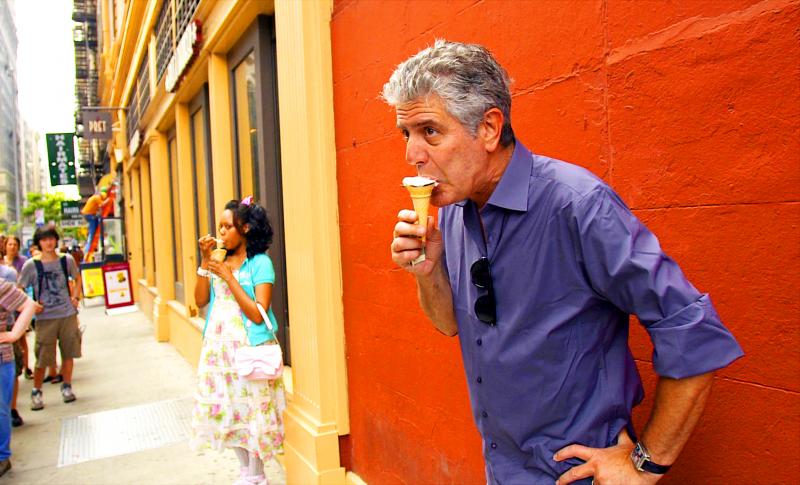
Photo: AP
That has renewed a debate about the future of voice-cloning technology, not just in the entertainment world, but in politics and a fast-growing commercial sector dedicated to transforming text into realistic-sounding human speech.
“Unapproved voice cloning is a slippery slope,” Andrew Mason, the founder and chief executive of voice generator Descript Inc, wrote in a blog post on Friday. “As soon as you get into a world where you’re making subjective judgment calls about whether specific cases can be ethical, it won’t be long before anything goes.”
Before this week, most of the public controversy around such technologies focused on the creation of hard-to-detect deepfakes using simulated audio and/or video and their potential to fuel misinformation and political conflict.
Yet Mason, the founder and chief executive of Groupon, said in an interview that Descript has repeatedly rejected requests to bring back a voice, including from “people who have lost someone and are grieving.”
“It’s not even so much that we want to pass judgment,” he said. “We’re just saying you have to have some bright lines in what’s okay and what’s not.”
Angry and uncomfortable reactions to the voice cloning in the Bourdain case reflect expectations and issues of disclosure and consent, said Sam Gregory, program director at Witness, a nonprofit working on using video technology for human rights.
Obtaining consent and disclosing the technowizardry at work would have been appropriate, he said.
Instead, viewers were stunned — first by the fact of the audio fakery, then by the director’s seeming dismissal of any ethical questions — and expressed their displeasure online.
“It touches also on our fears of death and ideas about the way people could take control of our digital likeness and make us say or do things without any way to stop it,” Gregory said.
Neville has not identified what tool he used to recreate Bourdain’s voice, but said he used it for a few sentences that Bourdain wrote but never said aloud.
“With the blessing of his estate and literary agent we used AI technology,” Neville said in a written statement. “It was a modern storytelling technique that I used in a few places where I thought it was important to make Tony’s words come alive.”
Neville also told GQ magazine that he got the approval of Bourdain’s widow and literary executor.
“I certainly was NOT the one who said Tony would have been cool with that,” the chef’s wife, Ottavia Busia, wrote on Twitter.
Although tech giants, such as Microsoft Inc, Alphabet Inc’s Google and Amazon.com Inc, have dominated text-to-speech research, there are now also a number of start-ups such as Descript that offer voice-cloning software. The uses range from talking customer service chatbots to video games and podcasts.
Many of these voice cloning companies prominently feature an ethics policy on their Web site that explains the terms of use. Of nearly a dozen firms contacted by The Associated Press, many said they did not recreate Bourdain’s voice and would not have if asked.
Others did not respond.
“We have pretty strong polices around what can be done on our platform,” said Zohaib Ahmed, founder and chief executive of Resemble AI, a Toronto company that sells a custom AI voice generator service. “When you’re creating a voice clone, it requires consent from whoever’s voice it is.”
Ahmed said the rare occasions where he has allowed some posthumous voice cloning were for academic research, including a project working with the voice of former British Prime Minister Winston Churchill, who died in 1965.
Ahmed said a more common commercial use is to edit a TV ad recorded by real voice actors and then customize it to a region by adding a local reference. It is also used to dub anime movies and other videos, by taking a voice in one language and making it speak a different language, he said.
He compared it to past innovations in the entertainment industry, from stunt actors to greenscreen technology.
Just seconds or minutes of recorded human speech can help teach an AI system to generate its own synthetic speech, although getting it to capture the clarity and rhythm of Anthony Bourdain’s voice probably took a lot more training, said Rupal Patel, a professor at Northeastern University who is the founder and chief executive of another voice-generating company, VocaliD Inc, which focuses on customer service chatbots.
“If you wanted it to speak really like him, you’d need a lot, maybe 90 minutes of good, clean data,” she said. “You’re building an algorithm that learns to speak like Bourdain spoke.”
Neville is an acclaimed documentarian who also directed the Fred Rogers portrait Won’t You Be My Neighbor? and the Oscar-winning 20 Feet From Stardom.
He began making his latest movie in 2019, more than a year after Bourdain’s death by suicide.
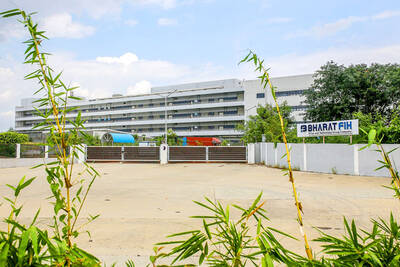
SETBACK: Apple’s India iPhone push has been disrupted after Foxconn recalled hundreds of Chinese engineers, amid Beijing’s attempts to curb tech transfers Apple Inc assembly partner Hon Hai Precision Industry Co (鴻海精密), also known internationally as Foxconn Technology Group (富士康科技集團), has recalled about 300 Chinese engineers from a factory in India, the latest setback for the iPhone maker’s push to rapidly expand in the country. The extraction of Chinese workers from the factory of Yuzhan Technology (India) Private Ltd, a Hon Hai component unit, in southern Tamil Nadu state, is the second such move in a few months. The company has started flying in Taiwanese engineers to replace staff leaving, people familiar with the matter said, asking not to be named, as the
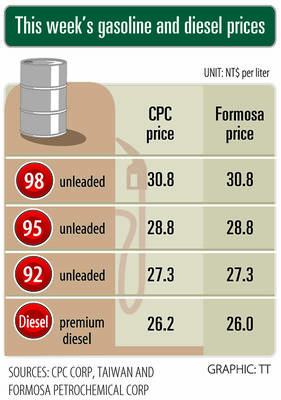
The prices of gasoline and diesel at domestic fuel stations are to rise NT$0.1 and NT$0.4 per liter this week respectively, after international crude oil prices rose last week, CPC Corp, Taiwan (台灣中油) and Formosa Petrochemical Corp (台塑石化) announced yesterday. Effective today, gasoline prices at CPC and Formosa stations are to rise to NT$27.3, NT$28.8 and NT$30.8 per liter for 92, 95 and 98-octane unleaded gasoline respectively, the companies said in separate statements. The price of premium diesel is to rise to NT$26.2 per liter at CPC stations and NT$26 at Formosa pumps, they said. The announcements came after international crude oil prices
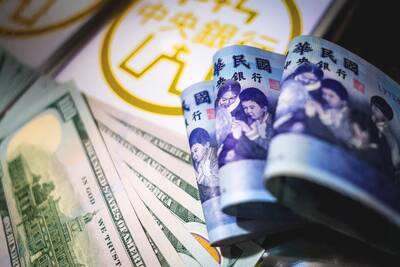
DOLLAR SIGNS: The central bank rejected claims that the NT dollar had appreciated 10 percentage points more than the yen or the won against the greenback The New Taiwan dollar yesterday fell for a sixth day to its weakest level in three months, driven by equity-related outflows and reactions to an economics official’s exchange rate remarks. The NT dollar slid NT$0.197, or 0.65 percent, to close at NT$30.505 per US dollar, central bank data showed. The local currency has depreciated 1.97 percent so far this month, ranking as the weakest performer among Asian currencies. Dealers attributed the retreat to foreign investors wiring capital gains and dividends abroad after taking profit in local shares. They also pointed to reports that Washington might consider taking equity stakes in chipmakers, including Taiwan Semiconductor
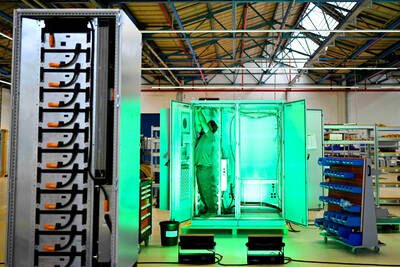
A German company is putting used electric vehicle batteries to new use by stacking them into fridge-size units that homes and businesses can use to store their excess solar and wind energy. This week, the company Voltfang — which means “catching volts” — opened its first industrial site in Aachen, Germany, near the Belgian and Dutch borders. With about 100 staff, Voltfang says it is the biggest facility of its kind in Europe in the budding sector of refurbishing lithium-ion batteries. Its CEO David Oudsandji hopes it would help Europe’s biggest economy ween itself off fossil fuels and increasingly rely on climate-friendly renewables. While